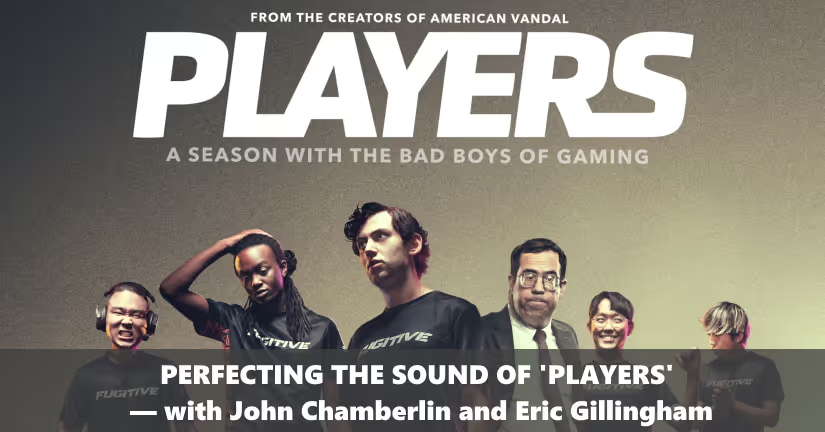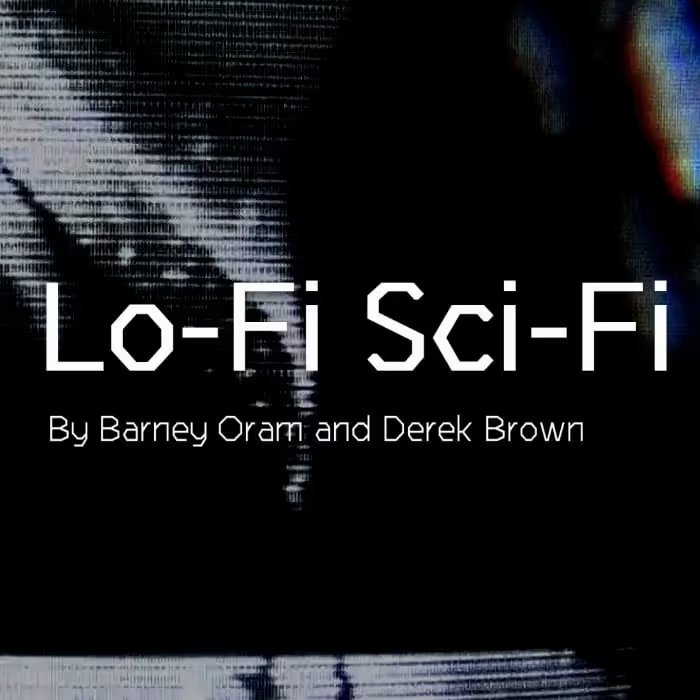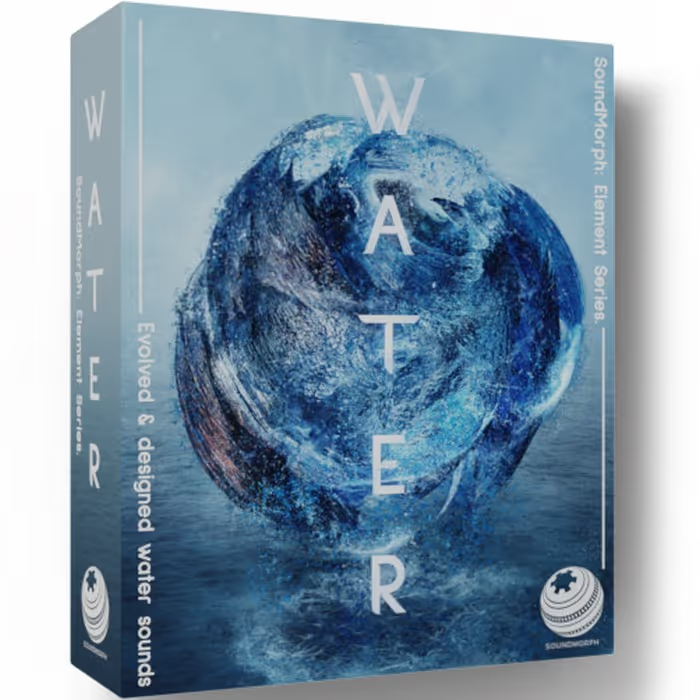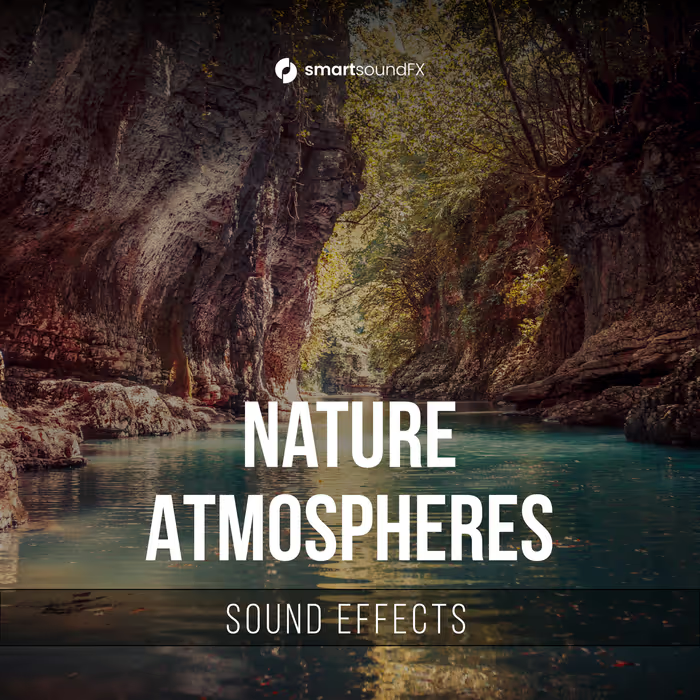As a former player of World of Tanks, I can attest to the highly competitive and often brutal nature of team-based PvP games where you’re thrown onto a team of randos and expected to know your role and where to go on any given map based on the tank you’ve chosen. Being a total WoT noob, this was overwhelming and resulted in tons of hate messages. The negativity was just too intense for my casual dabble into the game. Hence the moniker of ‘former’ WoT player.
So when Paramount+ released their new series Players – a docu-comedy depicting the world of esports players – I was all too ready to have a laugh at the seriousness of team-based gaming because as the saying goes, “many a true word is spoken in jest.”
That’s not to say that esports aren’t serious business. In fact, according to Newzoo market projections “esports will generate nearly $1.38 billion in revenues globally by the end of 2022.” That’s serious money. Gaming.net reports that the highest paid League of Legends esports athletes – such as Faker, Duke, and Bengi – are consistently making over $1 million a year! “This isn’t even to account for sponsorships, team bonuses, and streaming revenue, which could easily double if not triple these profits,” wrote journalist Riley Fonger. Salaries like that don’t come from casual gaming. It takes dedication, practice, and hard work, just like any other sport.
Players follows a fictional League of Legends team-on-the-rise called Fugitive, but showrunners Tony Yacenda and Dan Perrault called on real esports players and industry commentators and attended League Championship Series (LCS) events to research and therefore depict this industry with as much veracity as possible. The adherence to the sports documentary style – think The Last Dance – makes this esports mockumentary a must-watch gem. The opening scene with the fictional lead character Creamcheese sitting on a bench with his back to the camera as he’s looking out the window is an exact rip of the opening shot of Michael Jordan in The Last Dance. The gravitas in the context of the Players story is hilarious.
Embracing the documentary feel for Players was the modus operandi from the start of production to the end of post – from staging LoL battles that play out on big screens to crowds at LCS events to using security camera footage to capture “unguarded” conversations in the office at the Fugitive mansion. (It’s all scripted, of course.) Here, supervising sound editor/re-recording mixer/dialogue editor John Chamberlin and co-supervising sound editor/sound effects editor Eric Gillingham at WB Post Production Creative Services, Burbank: Sound talk about what it took to create a believable documentary feel from a sound standpoint, how they crafted believable crowd sounds, what mics they chose to get the perfect perspective for dialogue, how they handled the ‘archive’ footage from Fugitive’s early years, and so much more. Plus, Kien Lam – Esports Content Writer at Riot Games – reveals how they handled the gameplay sequences, from staging the LoL battles to delivering the in-game audio assets to Chamberlin.
Players | Official Trailer | Paramount+
Were you fans of esports (or League of Legends) before you started on this show? How did you prepare for creating the sound of Players to impart that ‘authentic’ feel?
Eric Gillingham (EG): I have always certainly been aware of esports but had never been a fan or dove in nearly as much as I had while working on Players.
With that said, however, a month before we started, I began watching some of the live streams (streamers and some videos at esports events) on YouTube to get more of an idea of the world these characters were occupying. It gave me a great deal of insight into the characters and how the fans interact, which gave me a lot of information about how to approach the crowds in the show.
…I began watching some of the live streams (streamers and some videos at esports events) on YouTube to get more of an idea of the world these characters were occupying.
John Chamberlin (JC): About 7 years ago, a friend recommended me as a mixer for player bio/docs for Riot Games League Of Legends. It was my first time working for an esports client. Unlike the gaming sound side, I was mixing short documentary films about specific players and teams. These gamers lived all over the world. And surprising to me, when the docs were released on YouTube they racked up millions of views.
I did consider taking a gig with them but instantly realized that I had to have a gamer name even to be considered. So that was that.
When I found out that Tony Yacenda and Dan Perrault wanted me to mix their new series Players, I knew right away that this project would be challenging and super complex. At the heart of this show is a story of relationships “on and off the court.” It is also a story about some very talented esports athletes who want to achieve the highest honor in their sport. Tony and Dan love sports and making Players a quintessential sports doc was their goal. It’s reminiscent of the Chicago Bulls documentary The Last Dance.
The interviews, to me, are where they shine as directors because the interviews are so compelling and so real.
If you didn’t know any better you would swear this was about a real team. This is also the conceit of their other series, American Vandal. And like AV, they needed this to sound authentic. Tony and Dan need the viewer to believe that the story being told is real.
They told me the first thing they do on any of their shows – like American Vandal – is to record the sit-down interviews. To me, that’s mind-boggling. Of course, they’ve already thought about how the show is going to be put together, but to start out with the interviews is pretty wild because only they know what’s happening. The interviews, to me, are where they shine as directors because the interviews are so compelling and so real.
Flashbacks tell the story as much as the current footage and interviews. From wall-mounted cameras with low-quality audio to pristine interviews to an incredible score, the viewer feels like they are there discovering everyone’s motivation and a film crew was there to capture it all. The heightened sound treatments make it more emotional. Composer Darien Shulman has multiple themes that help the viewer connect to the characters, and the score repeatedly punctuates big moments in perfect sync with the actions on screen. Whether you notice it or not, it has an effect on you.
Eric worked very hard to find the right combinations of crowd sounds you hear as the Fugitive team travels from theater to stadium-sized competitions against other teams.
Lastly, a lot of the heavy lifting was done in sound editing with very specific choices of crowd sounds. Eric [Gillingham, sound effects editor and co-supervising sound editor] worked very hard to find the right combinations of crowd sounds you hear as the Fugitive team travels from theater to stadium-sized competitions against other teams. That was no small task and the competition scenes sound amazing. It was all meticulously cut and tweaked into what you hear on the broadcast. In addition, the use of loop group really brought this show to life.
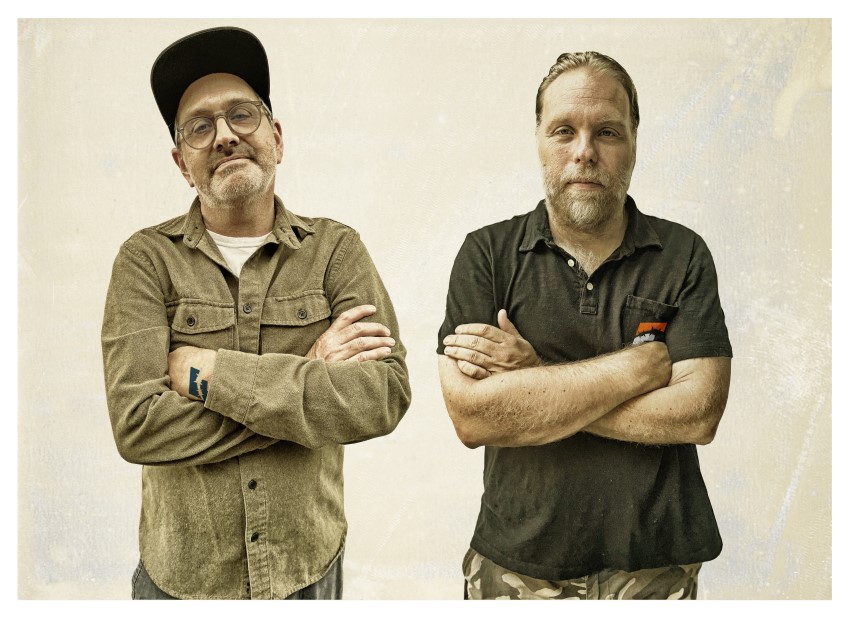
Players is a documentary-style comedic series. What are some important ways that sound helps to reinforce the ‘documentary-ness’ of the show?
JC: The way we present the dialog is very traditional. The picture editing is also very traditional. This series uses all the tropes of documentary filmmaking. Players tells a story using interviews of players (i.e., gaming professionals – many of whom are the actual game industry people) and anyone else needed to help tell the story, archival footage (staged footage of the players from many years ago, video clips from fake matches using Esportscasters to do play-by-plays), and gaming websites. Microphone choice was critical. Every effort was made to capture the sound in the most realistic way. And if capturing it that way wasn’t possible, we had to improvise.
…I would edit all source dialog out and use the opposite mic as our sound source.
There is a room in the Fugitive house where the managers have their office. We play these scenes as if the film crew has gone home and all we have is what the crappy camera in the room picks up. Except, the actual camera wasn’t capturing the audio. So to get that distant and compressed sound, I used a method devised in AV Season 1. Since I edited the dialog, I would edit all source dialog out and use the opposite mic as our sound source. For instance, if Braxton is in the office talking to Fugitive team owner Nathan Resnick, then I’d use Braxton’s dialog that was picked up on Resnick’s mic or vice versa.
This approach works really works well except when they talk over each other, and when you need to fix something with ADR. When tackling those moments, there is a lot of manipulation of the dry source and the ADR to dirty it up, often using reverb to make it work.
Because you can’t always get perfect audio recorded on set, we sometimes would keep the bumps and hits and even the distortion on the recordings.
There is also a lot of audio from podcasts and sportscasters throughout the season. When we needed to ADR their lines, we needed to match the audio recorded on the set. For the sportscasters, I reached out to Riot to see what they used, which were the Sennheiser HMD 27 and the HME 26ii. We got those mics and the ADR matched perfectly.
As far as podcast footage, Guru is featured a lot on his podcast. For that, I came up with a pretty cool EQ and compressor setting on the Channel strip. Because you can’t always get perfect audio recorded on set, we sometimes would keep the bumps and hits and even the distortion on the recordings.
EG: A lot of what went into making Players sound like a real documentary or re-creating that documentary feel was staying true to the type of footage we were presented with. When the show flashes back to the years when Fugitive was just getting started, for instance, there is a lot of footage shot on iPhones that was meant to have a more gritty, imperfect ‘documentary/found footage’ sort of vibe. For those, we used a combo of existing wild iPhone audio recordings provided to us by the producers/post supervisors, and then I provided a bank of mono tracks for futz purposes for sound effects.
…I took into mind the space and perspective of the room when choosing my sound effects…
There are also scenes shot from a more ‘security camera’ perspective in the present day that are processed differently as well (for which I also used the futzed bank). For the office scenes in the Fugitive compound shot from the overhead security camera, I took into mind the space and perspective of the room when choosing my sound effects, such as the sound of the door, the distance from the camera, reverb, etc. I also purposely didn’t choose the most robust sounds, but rather more distant, hollow sounds that would give John something closer to the sound you’d hear from a security camera once it has been processed with the futz. So, the choice of sounds is definitely affected by the documentary style.
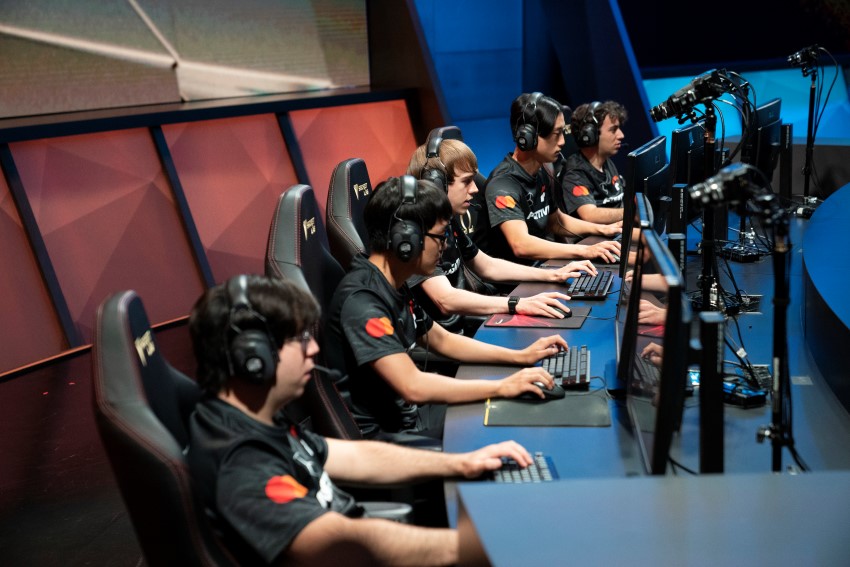
The series shows snippets of the League of Legends gameplay and tournaments. What did this require in terms of sound?
JC: Making a legit “moc doc” requires that you get every detail right. This series takes place now, showing the team’s 2021 season. But many times the filmmakers needed to go back in time to help establish the story from the past.
Kien Lam is credited as a producer on this series but he was also the person in charge of making sure the terminology and the sound effects for all gameplay were exact to the year that the game was being played.
Eric and I did not create any sounds for the gameplay; it was provided to us by Riot after it was played exactly the way the script described it.
Eric and I did not create any sounds for the gameplay; it was provided to us by Riot after it was played exactly the way the script described it. So every time you watch them playing the game remember that it was scripted, then performed by real players, and made to look like our actors were experiencing the moment – whether in real-time or as a memory of a game. The actors were so believable.
EG: I spent a lot of time watching streamers play League of Legends on YouTube, to try and get all the jargon and nomenclature for it, like “ADC” and “bot lane” – all those different positions – and each character has a defined role, like support, mid laner, top laner, bot laner, and jungler. It was important to get all of that right.
JC: When they recorded the ADR, they had Kien in the room with them to make sure that the esportscasters were getting it right. Every bit of ADR and loop group is scripted. When they are in the middle of a game and want more reactions from the team, they had gamers come in to record because they knew the lingo and they knew how to speak “game talk.” They would watch the game, go through it, and comment on it. Because they knew the game, they could be spontaneous and react appropriately, and then take direction.
Every bit of ADR and loop group is scripted.
Eric and I knew right from the beginning that we weren’t going to even touch the sound effects for the game and we weren’t going to try and reword anything because everything is so specific. That took a lot off our plate, but it also made it 100% accurate to the game, the era of the game, the year of the game, and to the action that was happening. It would’ve been way too difficult for us to do that.
EG: We were trying to make this documentary-style so we’re not trying to stylize the gameplay. The gameplay is already stylized. We don’t need to do that. We shouldn’t do that because it wouldn’t stay true to the actual game itself.
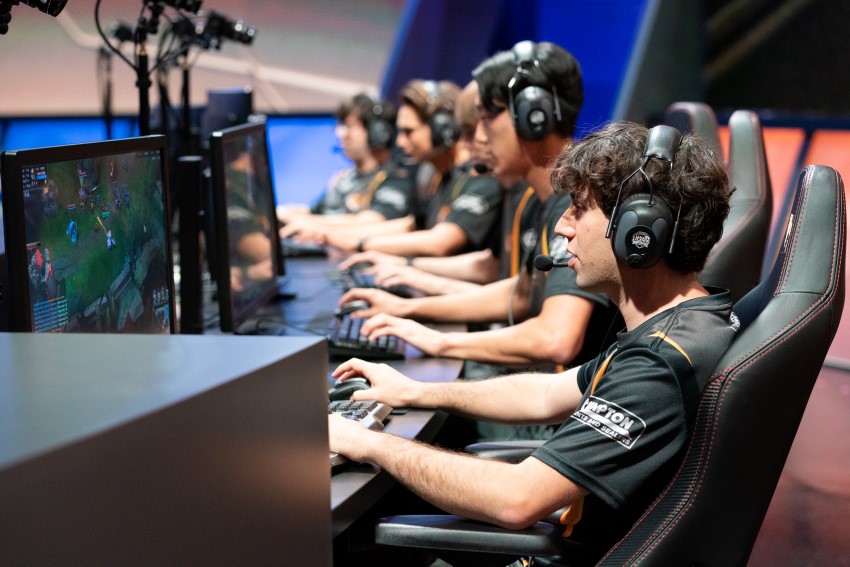
The gameplay sequences are incredible – to have the in-game League of Legends characters acting out a particular scene, to be in specific places and doing certain moves at certain times is almost like blocking in a film…
EG: This is the meat and potatoes of the show, and it’s the center from which stems all the drama between the characters. There were bits that were meant to be massively chaotic, where all the sounds were being played back at once: the announcers, the players in their comms, the game sounds, music, and the crowds.
And then, there were moments of reflections, of joy or heartbreak, and/or disappointment punctuated by the music and a dipping-out of elements, like crowds. So the challenge becomes how do we convey the range of emotions felt in the heat of the gameplay and stay true to the characters without ruining the dynamics at play with all the sound elements used to create the atmosphere.
So the challenge becomes how do we convey the range of emotions felt in the heat of the gameplay and stay true to the characters without ruining the dynamics…
This required a lot of back and forth between John and me, and the rest of the team with regards to the direction they wanted to go in, and, of course, rehearsing the guide audio to get a sense of what feel/emotion they were going through at any given time and to recreate that with the combination of gameplay, crowds, music, announcers, and characters interacting.
In my world, it was trying to interpret the flow of these scenes and the emotions conveyed and to deconstruct the ways in which the crowds could add to the excitement but not overpower any of the other elements – to find the right balance between all the elements together and to choose the right types of crowds, the right reactions, the right beds, and to smooth out transitions between moments of excitement and moments of joy and heartbreak.
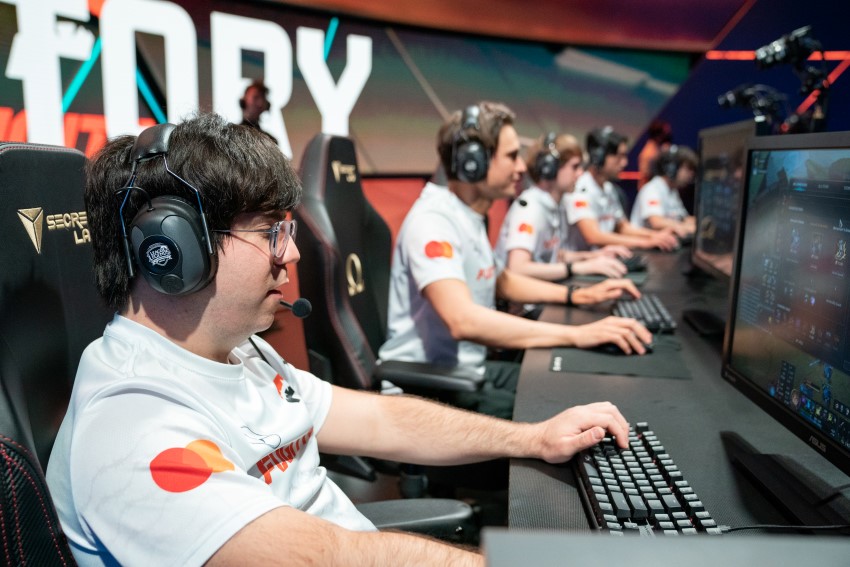
Kien, you handled the gameplay aspects of the show – staging the LoL battles to be what the showrunners needed script-wise. Sound-wise, were you recording the in-game audio as the players “performed” these sequences? Is that what you delivered to John?
Kien Lam: The sounds were pretty straightforward — we just used what was already embedded into the gameplay. It’s the same sounds you’d hear if you loaded into a game and played yourself! There wasn’t much, if any, separation from the visual elements because of this. At that point, it just came down to mixing and how much we actually wanted to hear or not hear. I just had to make sure I delivered files without in-game music so that it wouldn’t overlap with whatever they wanted to play. Fortunately, the game itself has very good sound design, so I think it is already naturally appropriate for the gameplay moments and so we didn’t do any further enhancement.
It’s the same sounds you’d hear if you loaded into a game and played yourself!
In terms of challenges from a sound effects perspective, I think the editors might have liked getting more isolated sound effects so they could pick and choose what to emphasize, but even if we sent those individual files, it would have been a monumental task to know what sounds are or are not appropriate because League of Legends can be so foreign to people who don’t play. So having everything already embedded was probably a necessity.
For gameplay in general, the most difficult part was creating sequences that were, as best as possible, sensical to a non-League audience AND a League audience. Most people know to follow the ball when watching sports, but there is no clear thing to look at when it comes to LoL. Factor in the fact that there is a difference between professional play and amateur play (think NBA vs. middle school basketball) and there are just a lot of variables to keeping it authentic. The in-game sound design, fortunately, was fairly straightforward for us. I can’t imagine also having to individually figure that out!
League Frequencies Ep1 | Part 1: Audio Development Overview
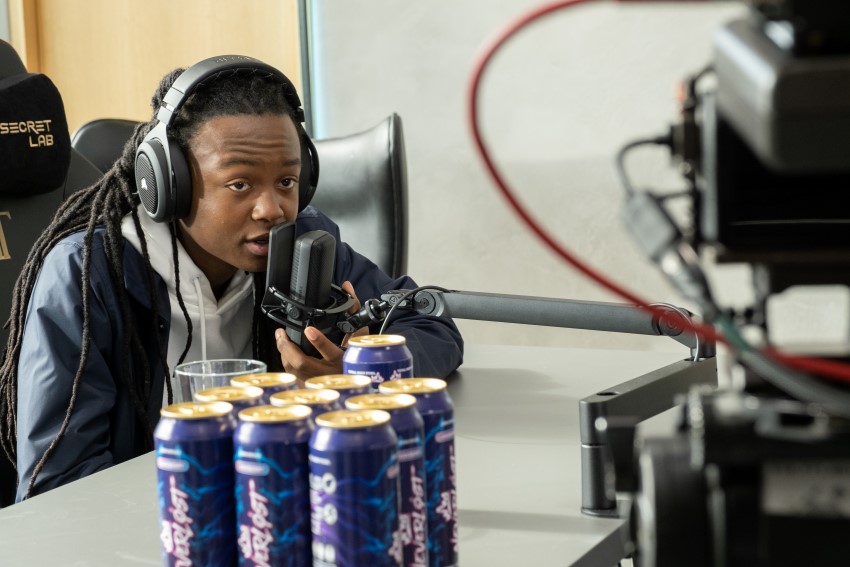
In Ep. 2, Organizm picks Heimerdinger during a competition and it causes quite a stir with the team, the spectators, and the announcers. How did you use sound to help add to the tension in this sequence? Also, can you talk about the mix? You found the perfect edge of chaos without losing control; I love it!
JC: This scene was a busy one. Throughout the scene, Darien’s brilliant score punctuates the building of tension. And to make things more interesting, there was dialog coming from many sources: interviews, sportscasters, live sound from the athletes, gameplay, and crowds. These moments took time to balance. But I need to credit the picture editors for leaving room to play up the important sound cues. The pace was constructed by Tony and Dan to do exactly what they intended – all with their patented humor infused throughout.
…I had to pick the correct reactions but also ones that would be able to cut through the wash of crowds…
EG: For me, it was a matter of choosing the right crowd reactions to highlight the frustration felt by the team in that moment. The choice of sounds played a massive role as I had to pick the correct reactions but also ones that would be able to cut through the wash of crowds that were already present and they couldn’t trounce all over the dialog, especially Creamcheese’s initial reaction.
At the same time, the crowds had to play nice with the sounds of surprise from the broadcasters and the disappointment of the team, so I tailored my crowd reactions to reflect the moods of both the players and the announcers, to sort of enhance the chaos of the scene and highlight why picking Heimerdinger was viewed as such a crucial mistake by Organizm.
[tweet_box]Perfecting the Sound of Paramount+ Docu-Comedy Series `Players` — with John Chamberlin and Eric Gillingham[/tweet_box]
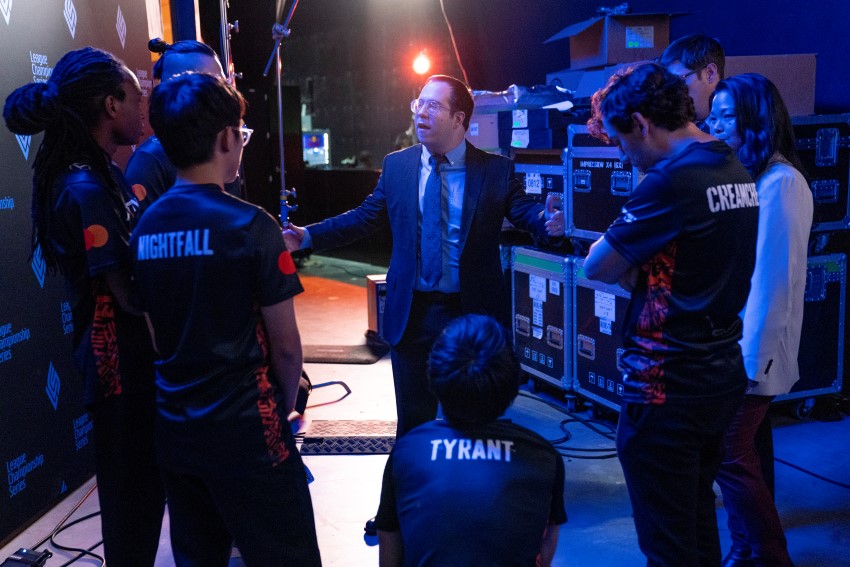
In Ep. 3, during the match, Organizm finds himself alone and he’s racking up death after death in the game. It’s a big moment of defeat for him. It’s a stylized moment, like any sports film where the home team is losing. Can you talk about your sonic choices for this sequence, in terms of editorial and mix?
JC: In this moment, I was but a pawn. The picture editors along with Tony and Dan came up with the concept but it was up to me and Eric to get it home. In this instance, it was all about stripping things away in order to focus on the delivery. We had dreamy reverbs on the dialog, which are fun to play with and when used as an emotional tool, can be quite effective.
We often will drop the world out around the players if it means we can get into their heads. That is a bit of a cheat but since there really isn’t a crowd when they are in gameplay, we can pull it off very poetically. And yeah, we are just talking about video games, but to the players it is everything.
We often will drop the world out around the players if it means we can get into their heads.
EG: This is where less is more. This had to be one of those moments where the emotion was better served with a graceful and gradual fade out of the crowds into that more dreamy and emotional state where you can relate to the massive disappointment.
This was best served with the punctuation of the brilliant score, and these scenes are where it really shines. We allow the music to really occupy that space and provide a really nice contrast between these moments and the otherwise surrounding moments of chaos with the crowds, gameplay, and players’ comms going all at once. It’s a very dynamic soundtrack by design, and it’s very reflective of the feel of the sports doc series that Tony and Dan are giving a nod to in this series.
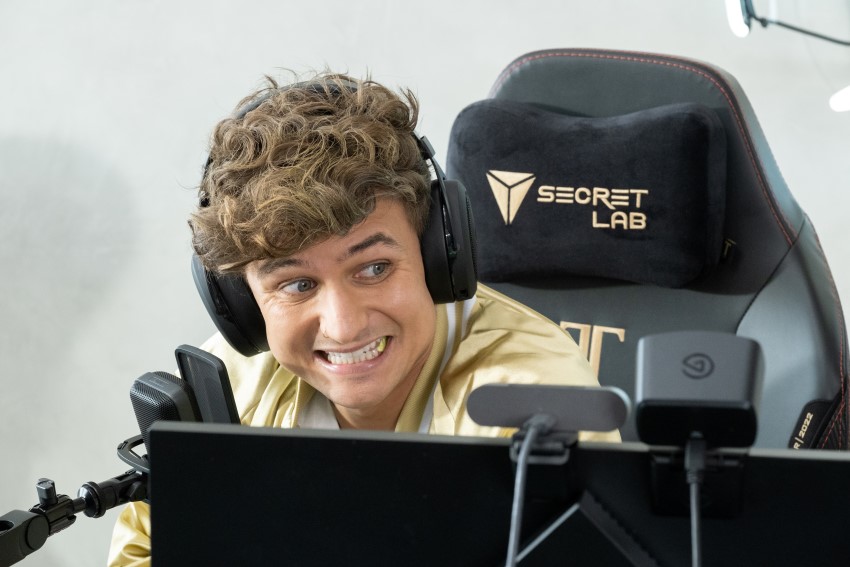
In Ep. 5, the show focuses more on Guru, who left the esports Fugitive team to be a streamer. Sonically, how does the sound of his world compare to Fugitive’s world?
JC: Guru has the biggest ego of them all – even bigger than Creamcheese. Guru’s world is flashy and tacky. He created an image that makes him look super famous, rich, and enviable, which of course worked out very well for him. Creamcheese is not a rule breaker. He is not going to surprise you in any other way except in his skills as a leader.
Even if he grabs the mic, we didn’t want to distract by adding mic grabbing or mic bumps.
Guru offers his opinions of all things LCS via his podcast, so I needed to make sure we had that sound. Even if he grabs the mic, we didn’t want to distract by adding mic grabbing or mic bumps. Often times the source was a bit too roomy so I would utilize the iZotope RX De-reverb to dry things up and keep it as slick as possible.
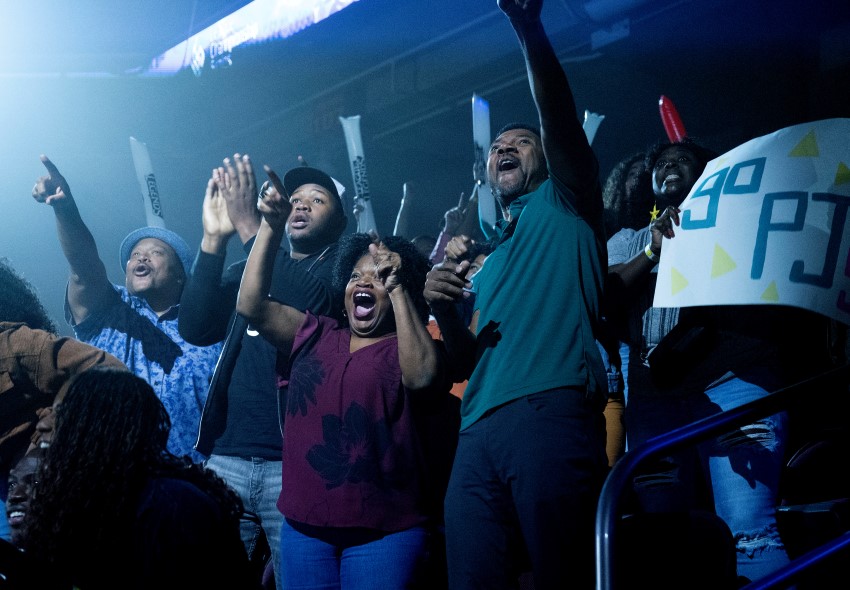
What was the biggest challenge in terms of sound editorial on this show?
EG: The biggest challenge from a sound effects editorial perspective was the ever-increasing and dynamic nature of the crowds. As the series evolves and Fugitive begins to get better and eventually perform in arenas, the crowds begin to get bigger. In fact, in many instances, Fugitive is seen as the underdog with most people rooting for the opposite team – for instance, TSM with Creamcheese’s former teammate Foresite.
The biggest challenge from a sound effects editorial perspective was the ever-increasing and dynamic nature of the crowds.
So to build the crowds, I had to implement a larger track count from the standard LCS Arena which (per the showrunners) was a 400-seat theater. For the general crowd beds, I found that cheering from basketball crowds worked well for the LCS Arena, as did applause from theater crowds. At the playoff and finals level, the team is playing for a crowd of thousands in a massive arena. My crowd track count doubled as the cheering, reactions, and beds got bigger with an even larger ambient space. Rock concert crowds worked well as a general bed for the massive arena.
To complicate matters further, the showrunners added the chanting of players’ names. In a couple of instances, I had to get creative with the chanting to be able to make it bigger. The editor had provided a file in their AAF with a small group chanting “Nightfall” and you can clearly see in the arena that everybody was meant to be chanting. I ended up using a plugin called Morph from Zynaptiq which can blend or morph two sounds together, or morph from one sound to another by way of automating the blend function. In this instance, I took the small group chant and morphed it with a large crowd cheer until I found a blend that created a faux large crowd chant.
…I took the small group chant and morphed it with a large crowd cheer until I found a blend that created a faux large crowd chant.
Also, in many instances, I would add rhythmic clapping and the challenge there was that not everybody in the auditorium would be clapping in sync with the chants so I had to ‘frame fudge’ it, so to speak. In conclusion, yes, the crowds got nuttier as the series went on.
Some challenging moments were when the crowds get quiet, as they did when Guru announces his retirement from Fugitive. In that moment, I needed a crowd murmur. It’s more like a crowd that’s just static because the game is over but they’re still there. I needed a crowd presence and that was the biggest challenge. It’s hard to do quiet crowds, especially in an environment like that.
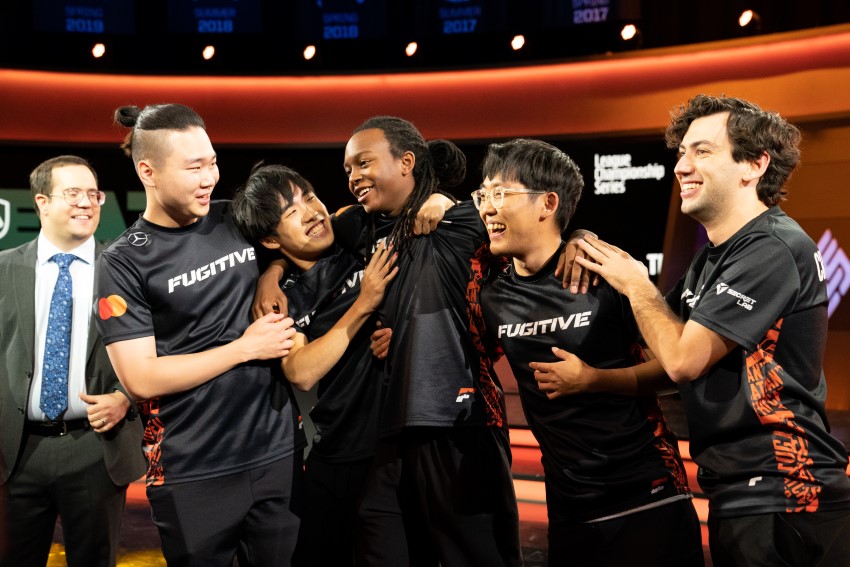
What was the biggest challenge from a mix standpoint?
JC: I could spend a lot of time discussing how cool this show is and how talented Tony and Dan are, but as far as the most challenging aspect of the mix goes, it has to be mixing the crowds. I actually waited until everything else was mixed to start the crowds. It was super mental.
I actually waited until everything else was mixed to start the crowds. It was super mental.
But once I got going, I really enjoyed it. I had to, or else the show would fall flat and I wouldn’t get any other gigs with them.
But seriously, there was a style they were going for. The crowds would sneak in before a cut; they would fade out gracefully. Sometimes it would just get a hard out. I guess you have to watch the show to understand what I am talking about.
Like any sports doc, the story is built around a specific match or several matches, a play made as a team or as a solo player. And those moments are brought to life with all the food groups: production dialog, interview dialog, production effects, hard effects, crowds, backgrounds, loop group, gameplay effects, music score, and sportscaster calls. All of those elements are dancing around with each other in a sonic square dance.
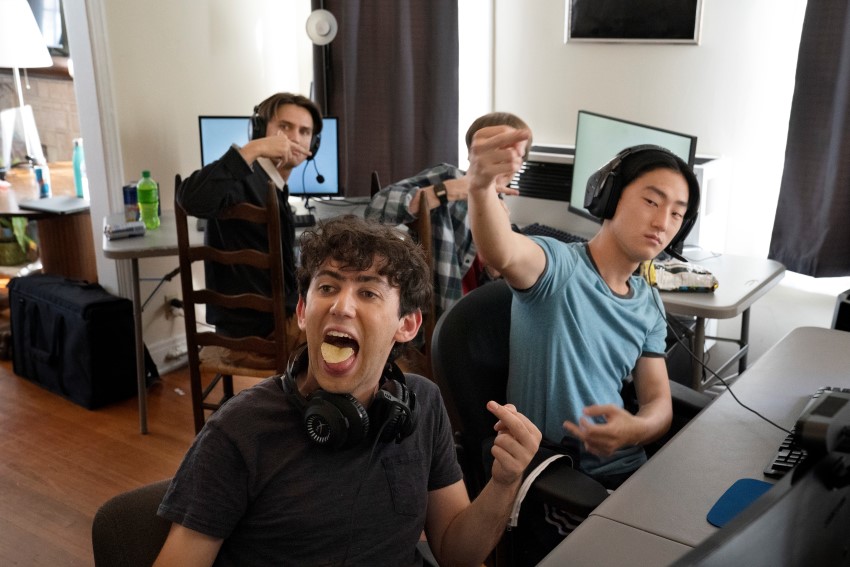
What are you most proud of in terms of your sound work on Players?
JC: I am really proud of the group effort. We were a small sound team. Reel Foley Sound took care of all our foley needs. Eric was killing it on effects; his early involvement in the spotting sessions played a critical part in how smoothly things started out for us. Aaron Sutherland and Jason Oliver took care of our ADR and Group recordings. Darien Shulman’s score never sounded better. Jinh Han and Colin Laurent-Bixler were our AE’s on the post side. They had the patience of saints as we got further and further into all the episodes. We really had to keep our cool in order to respect each other’s time in an effort to keep newly updated audio organized and delivered to the stage. And Dave Neglia and Devon Colbert held it all together in post. Respect.
We really had to keep our cool in order to respect each other’s time in an effort to keep newly updated audio organized and delivered to the stage.
EG: I am proud of the fact that we took on such a massive workload and an ever-changing schedule that at times was rather chaotic and we still managed to deliver an amazing-sounding show that the showrunners and network execs absolutely loved.
Honestly, the best feeling is during playback when the notes are all finished, and the execs watched the final product and constantly praised us for our work. In the end, it’s all about seeing the showrunner’s vision through to the end and I think we achieved this, and I also believe we have managed to stay true to the sports documentary format.
Staying on top of those crowds was a challenge in and of itself, especially keeping them fresh and dynamic…
I’m proud that we achieved the dynamics and punctuated the journey of the characters and stayed true to the format and the original intent of the showrunners.
I’m also proud of my newfound crowd editorial skills. To my knowledge, I don’t think there’s a show that has crowds throughout ALL 10 episodes of a series. Staying on top of those crowds was a challenge in and of itself, especially keeping them fresh and dynamic and changing them to meet the situation at hand.
I think cutting crowds is probably a ‘secret art,’ as is cutting cars. On the surface, it seems pretty easy but when you get into the nuts and bolts of it, it really forces you to go way more microscopic and specific about your sound choices. So I’m pretty proud of that aspect; I feel I’ve upped my game to that end.
A big thanks to John Chamberlin and Eric Gillingham for giving us a behind-the-scenes look at the sound of Players and to Jennifer Walden for the interview!

